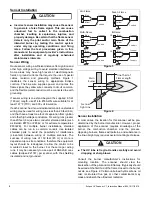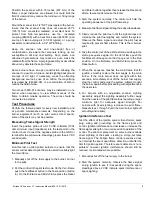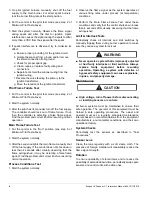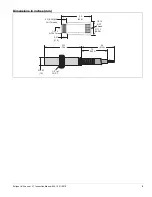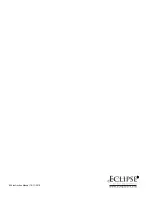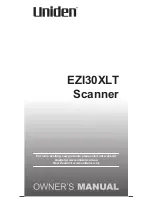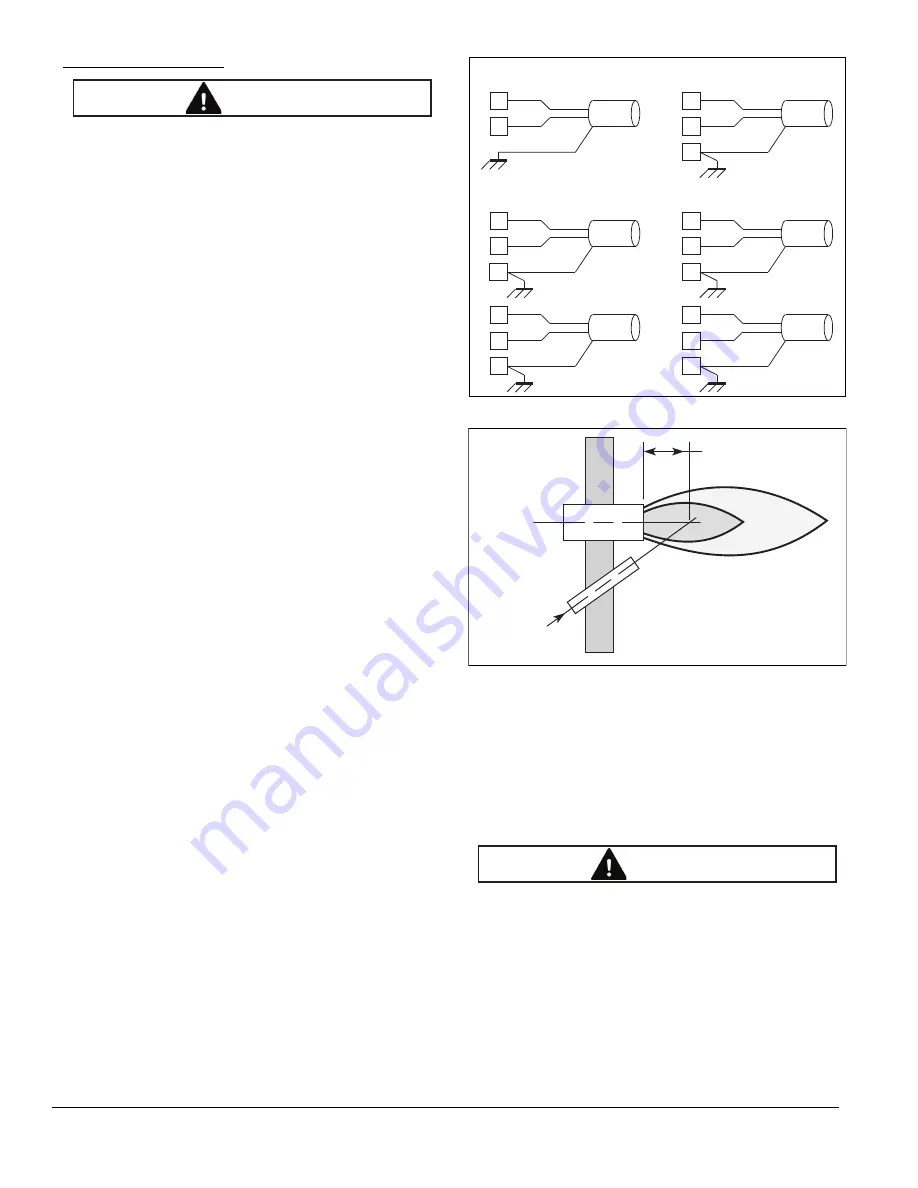
2
Eclipse UV Scanner, V1, Instruction Manual 854, 10/11/2010
Sensor Installation
■
Incorrect sensor installation may cause the sensor
to generate a false flame signal. This can cause
unburned fuel to collect in the combustion
chamber, resulting in explosions, injuries, and
property damage. Be certain that the flame sensor
detects only the pilot and/or main flame of the
intended burner by testing the control system
under varying operating conditions and firing
rates. Follow the test procedures given in this
manual and the equipment provider’s instructions
after installation and at regularly scheduled
maintenance intervals.
Sensor Wiring
Route sensor wiring a sufficient distance from ignition and
other high voltage wiring to avoid electrical interference.
Some areas may have high levels of electromagnetic
fields or ground currents that require the use of special
cables, isolation and grounding methods. Figure 1
illustrates the sensor wiring to appropriate Eclipse
controls. The blue wire supplies power and carries the
flame signal, the yellow wire connects to circuit common,
and the flexible metal conduit must be connected to earth
grounding.
If sensor wiring is to extend beyond the supplied 6 foot
(183 cm) length, use #14 to #18 AWG wire suitable for at
least 167°F (75°C) and 600 volt insulation.
If each scanner has its own dedicated conduit, unshielded
wiring may be used for wiring runs less than 20 feet (6 m)
and that have at least one foot of separation from ignition
and other high voltage conductors. For wiring runs greater
than 20 feet (6 m) use two-conductor shielded cable (such
as Belden #8719 or #9342, or for extreme temperatures
#83322E). For multiple burner installations, shielded
cables can be run in a common conduit. Use isolated
shielded pairs to avoid the possibility of interference
(cross-talk) between wiring of multiple scanners. The
success of wiring runs of 150 feet (45 m) or more is
dependent upon site conditions; therefore the equipment
layout should be redesigned to allow the control to be
mounted closer to the burner. For these longer wiring
runs, it may be necessary to use a pair of RG62A/U coax
cables (Eclipse #21741) per scanner, with the shielding
insulated and not grounded.
Figure 1.
Figure 2.
Sensor Installation
In most cases, the location for this scanner will be pre-
determined by the burner manufacturer. However, proper
application of this scanner requires knowledge of the
burner, the combustion chamber, and the process.
Opposing burners, flame swirl patterns, and substance in
the line-of-sight may require special mounting techniques.
■
The UV tube is fragile. Handle carefully and avoid
dropping or sharp blows.
Consult the burner manufacturer’s instructions for
mounting location. The scanner should view the
intersection of the pilot and main flames. It typically should
be aimed at the first third of the flame closest to the burner
nozzle, see Figure 2. Certain unburned hydrocarbons, oil
mist, recirculated flue gas or other contaminants may
mask and absorb the ultraviolet radiation.
CAUTION
Veri-Flame
Blue
Yellow
S1
S2
Scanner
Conduit
Multi-Flame
Blue
Yellow
Scanner
Conduit
Blue
Yellow
Scanner
Conduit
3
2
4
9
8
10
Peek-A-Flame
Bi-Flame
Blue
Yellow
Scanner
Conduit
7
8
2
3
2
4
1
2
4
J4
J5
Blue
Yellow
Scanner
Conduit
Blue
Yellow
Scanner
Conduit
One-Third of
Flame Length
Main
Burner
Scanner
Sight Line
CAUTION


